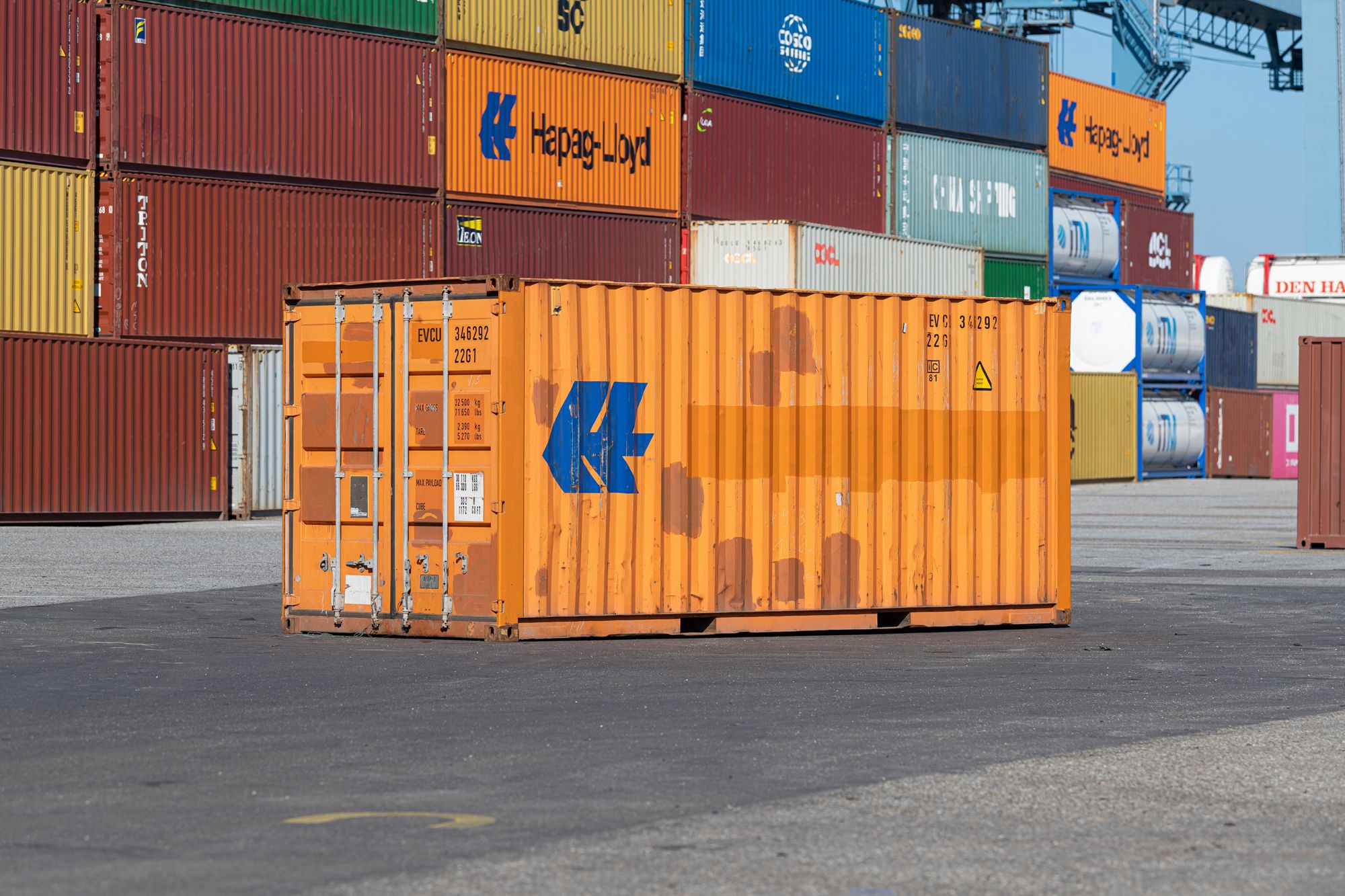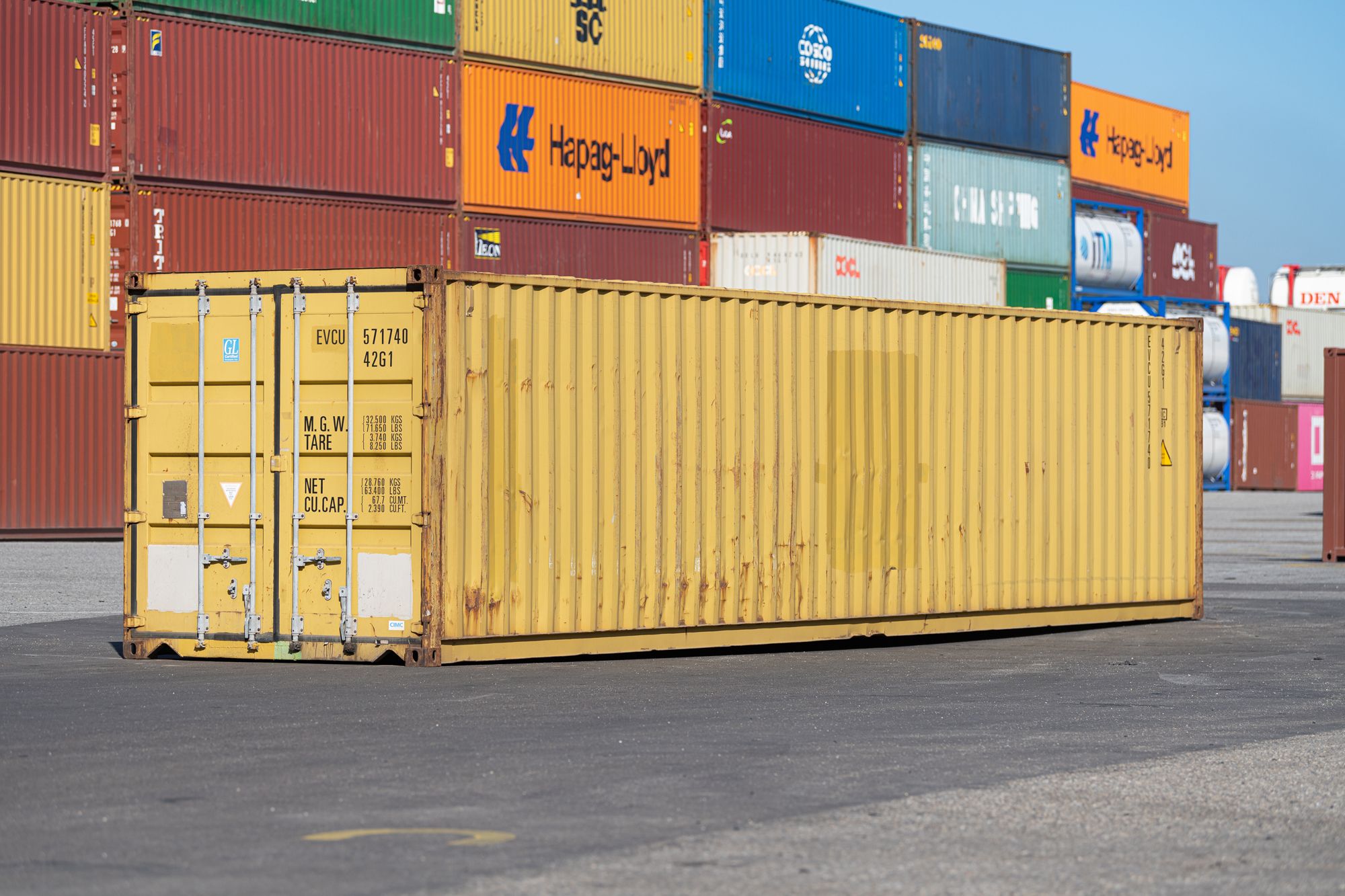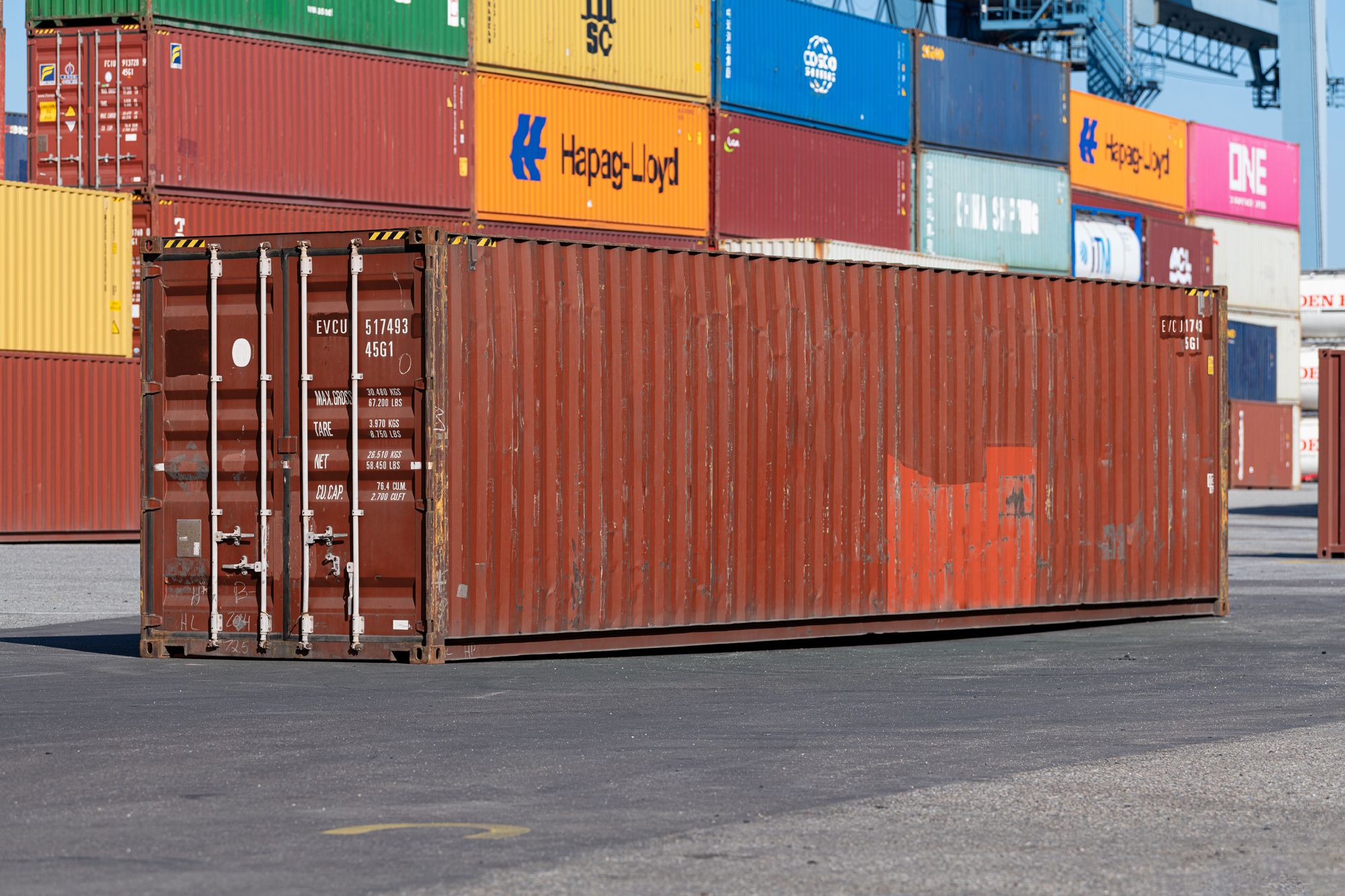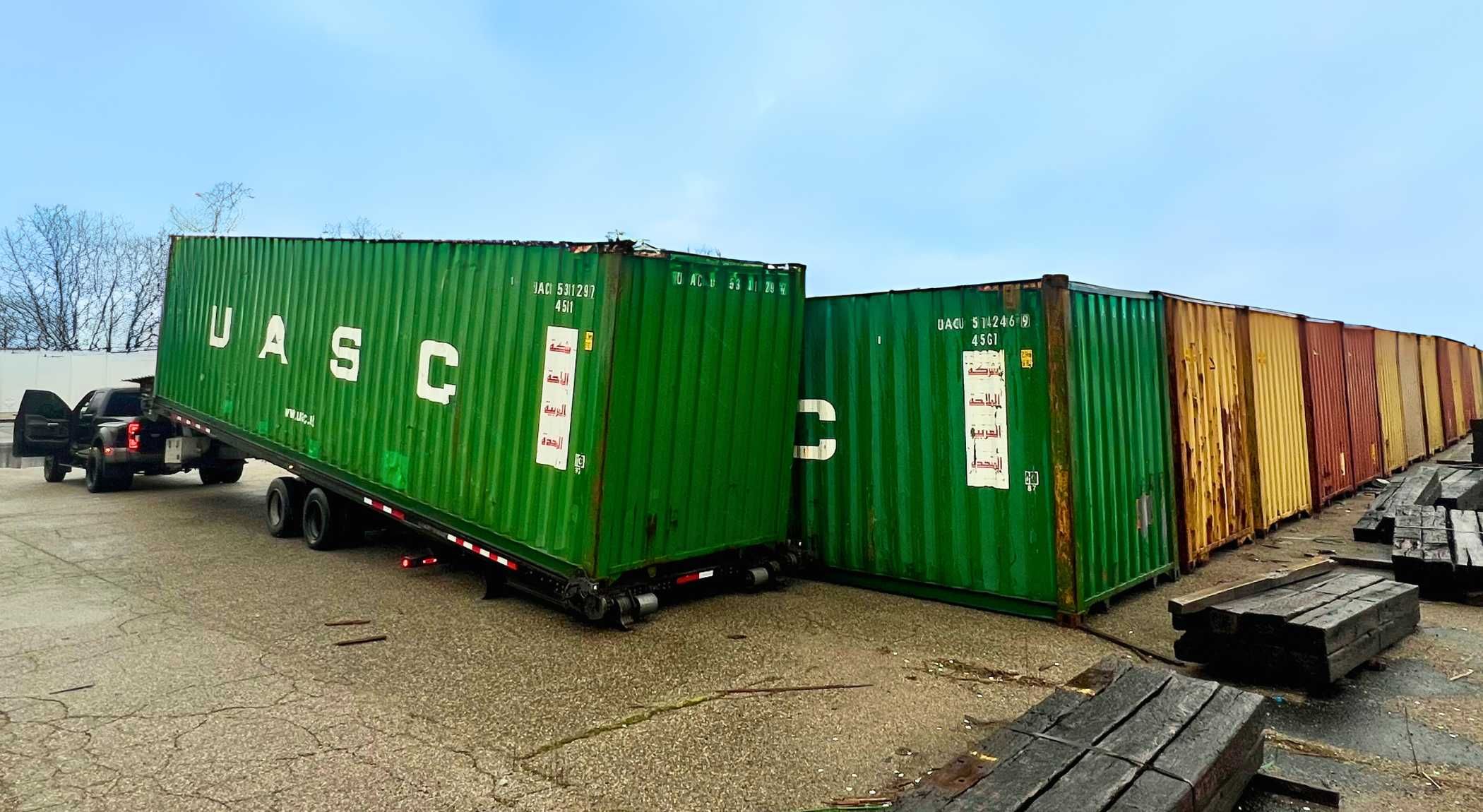Limited Time Offer: Get $100 Off Per Container
Smart Sourcing: The Procurement Manager's Playbook for Used Containers
Learn why purchasing used shipping containers from Eveon Containers for your next project or work site is a sustainable and smart choice.


Shipping containers are gaining traction as essential assets in the construction, manufacturing, and logistics industries. Originally designed for cargo transportation, these sturdy structures are now widely used for temporary offices, secure storage, equipment supplies stores, and onsite branding on job sites. For procurement managers, sourcing used shipping containers can be a cost-effective and versatile solution to meet job site needs. Let’s explore the advantages of using used containers, key considerations for selecting them, and best practices for successful procurement.
- Strength & Durability: Built to withstand harsh conditions, shipping containers offer a secure and long-lasting solution.
- Weatherproof Protection: Guaranteed to be wind- and watertight, they ensure your tools, equipment, stay safe and dry from the elements.
- Portability: Shipping containers can easily be moved around your property or jobsite as needed.
- Cost-Effective: For long-term storage, purchasing a used container is often more affordable than ongoing rental fees.
- Sustainable Solution: By repurposing old containers instead of buying new, you contribute to an eco-friendlier approach, reducing waste, emissions and promoting sustainability.
- More Room for Less: With 20ft, 40ft, and 40ft High Cube options your organization can safely secure up 2,696 cu ft. or 62,974 lbs. of items to your location.
The Practical Guide to Sourcing Used Shipping Containers for Job Sites: A Procurement Manager’s Handbook
The Benefits of Used Shipping Containers for Job Sites
Used shipping containers provide a durable, secure, and cost-effective solution for job sites. Here are some notable advantages:
1. Cost-Effectiveness
Purchasing used containers is significantly more economical than acquiring new ones. Used containers typically retain their structural integrity, and any superficial wear from previous use generally doesn’t impact their function, making them an affordable option for temporary facilities.
2. Durability and Security
Made from robust steel and designed to withstand harsh weather conditions at sea, shipping containers offer a high level of security for tools, equipment, and materials. This inherent durability minimizes the risk of theft and damage.
3. Versatility
Used shipping containers are highly customizable, making them versatile for job sites. They can be converted into mobile offices, break rooms, restrooms, or secure storage units. Their portability allows easy relocation across the site as project phases advance.
4. Sustainability
Opting for used containers aligns with sustainability goals, as reusing containers reduces the demand for new materials and contributes to environmental conservation by repurposing existing structures.
Key Considerations for Selecting Used Shipping Containers
When sourcing used shipping containers, procurement managers should be mindful of several key factors to ensure they acquire the right container for job site requirements.
1. Container Condition
Wind and Watertight (WWT) containers with minor wear that still provide strong weather protection, suitable for most storage purposes. Evaluating the container's condition is crucial for choosing one that matches the project’s specific needs and budget.
2. Size and Dimensions
The two standard container sizes are 20-foot and 40-foot, with additional options available, such as high-cube containers with increased height. Determining the amount of storage space required on-site will guide the choice of container size.
3. Structural Modifications
Consider any specific modifications required before procurement.
- Doors and Windows: Adding doors, windows, or skylights for increased accessibility and ventilation.
- Insulation: For containers used as offices or break rooms, insulation is crucial for maintaining a comfortable internal temperature.
- Electrical and Plumbing: If the container will house employees or sensitive equipment, electrical and plumbing installations may be necessary.
4. Supplier Reputation and Transparency
Working with reputable suppliers helps ensure quality and transparency in the procurement process. Comparing multiple suppliers is a best practice to ensure competitive pricing and service quality. Look for suppliers who offer:
- Clear pricing and detailed information on the container’s condition.
- Customer testimonials or case studies that demonstrate reliability.
- Assistance with transportation and installation if required.
Maximizing Value with Smart Container Choices
Used shipping containers offer a practical, sustainable, and budget-friendly solution for job site requirements. By carefully assessing the condition, size, and customization needs of each container, procurement managers can secure reliable storage and workspace options that meet the dynamic needs of construction and industrial projects. Adhering to best practices in supplier selection and container maintenance will further optimize these investments, providing safe, flexible, and durable resources for job site efficiency.

20ft Used Container
Dimensions
Length
20'
Width
8'
Height
8' 6"
Can Fit
200 bales of hay
50-60 refrigerators
10 pallets (each carrying 60 boxes)
1-2 classic cars
The contents of a 3-bedroom house

40ft Used Container
Dimensions
Length
40'
Width
8'
Height
8' 6"
Can Fit
Large farm machinery
600-800 auto tires
20 pallets (each carrying 120 boxes)
2 to 4 small cars
The contents of a 5-bedroom house

40ft Used High Cube Container
Dimensions
Length
40'
Width
8'
Height
9' 6"
Can Fit
1 to 2 tractors
80-120 granite countertops (5ft x 10ft)
20 pallets (each carrying 120 boxes)
2 to 4 cars
The contents of a 5-bedroom house


